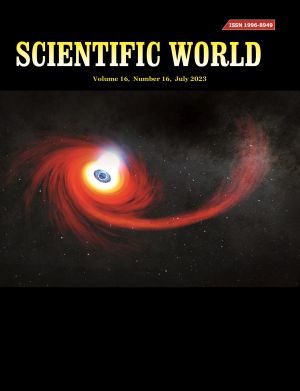Monte-Carlo simulation of phase transition in 2D and 3D ising model
DOI:
https://doi.org/10.3126/sw.v16i16.56744Keywords:
Critical temperature, Markov-chain, Phase transition, Spontaneous magnetization, Symmetry breakingAbstract
In this work, Markov Chain-Monte Carlo technique was used to study the phase transition in two and three dimensional Ising Model (IM) in a square and cubic lattice. The study of temperature dependence of average magnetization and specific heat in different magnetic fields has been carried out in the 3x3 and 3x3x3 lattice with periodic boundary. Critical temperature point kBTc / J for 2D and 3D Ising Model has been observed at around 2.2 and 4.3 respectively at zero field. Our work satisfies Onsager’s critical value in 2D IM. The simulation suggests bifurcation in average magnetization below critical temperature Tc. Temperature plays the role of increasing randomness of spins. We found that Ising Model in small lattice size still retains interesting features like spontaneous magnetization and symmetry breaking below Tc at B = 0. At a non-zero field, the likelihood of spins to prefer certain alignment depends on the direction of the external field and magnitude of magnetization depends on magnitude of field ±B. Specific heat Cv, which gives us fluctuation of energy at particular temperature, has been found to attain maximum value at critical regions.




